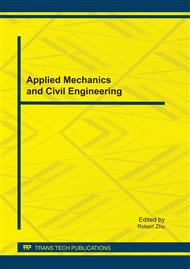p.1
p.7
p.12
p.16
p.24
p.30
p.36
p.42
Numerical Simulation for Mechanical Behavior of Carbon Black Filler Particle Reinforced Rubber Matrix Composites
Abstract:
In this paper, the micromechanical finite element method based on Representative Volume Element has been applied to study and analyze the macro mechanical properties of the carbon black filled rubber composites by using two-dimensional plane stress simulations and three-dimensional axisymmetric simulations under uniaxial compression respectively. The dependence of the macroscopic stress-strain behavior and the effective elastic modulus of the composites, on particle shape, particle area/volume fraction and particle stiffness has been investigated and discussed. Additionally, the simulation results of the two-dimensional plane stress model and the three-dimensional axisymmetric model are evaluated and compared with the experimental data, which shows that the two-dimensional plane stress simulations generate poor predictions on the mechanical behavior of the carbon black particle reinforced rubber composites, while the three-dimensional axisymmetric simulations appear to give a better prediction.
Info:
Periodical:
Pages:
1-6
Citation:
Online since:
October 2011
Authors:
Price:
Сopyright:
© 2012 Trans Tech Publications Ltd. All Rights Reserved
Share:
Citation:


